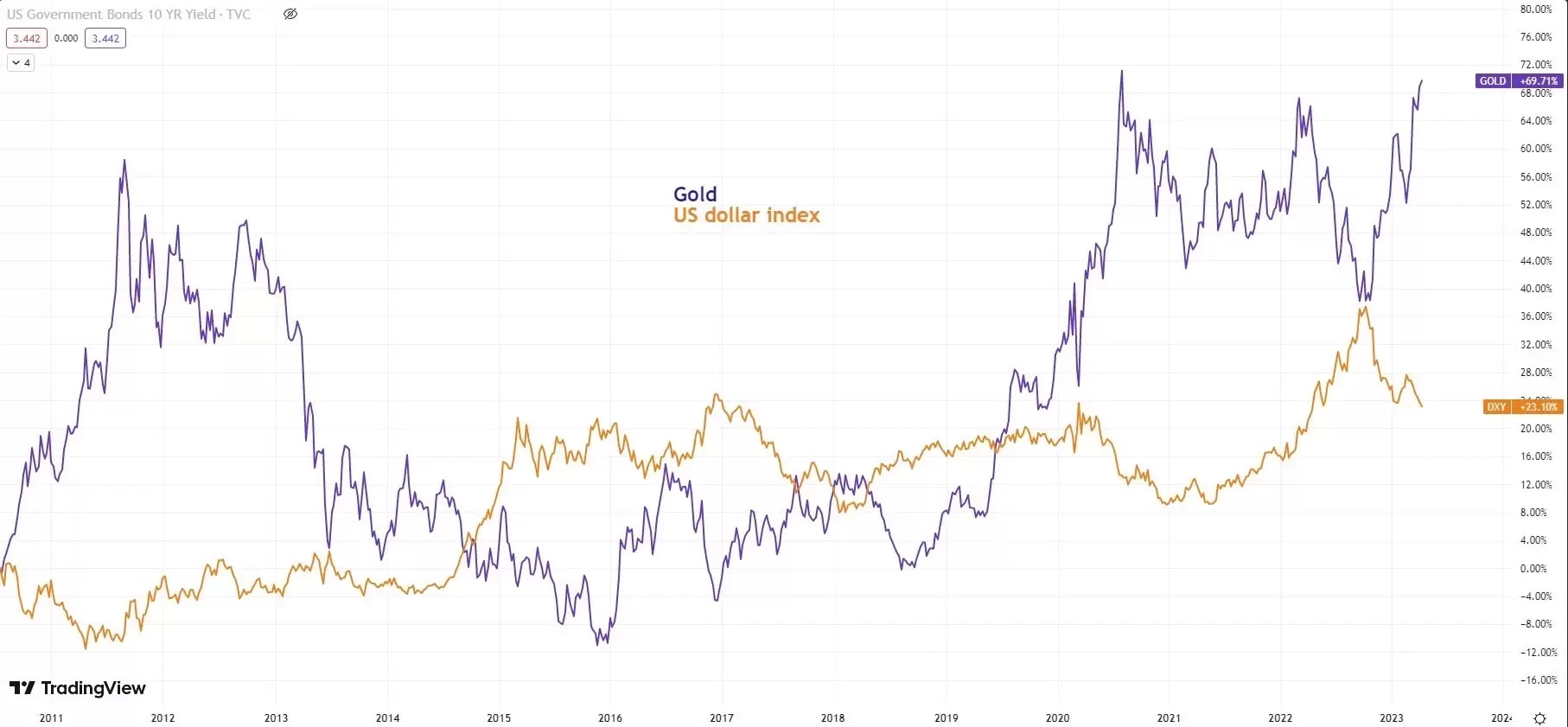The US March CPI data was in line with expectation, with the headline data pointing to a further cooldown in inflation, printing at 5% from 6% in February. However, the core CPI, excluding energy and food, remained sticky at 5.6% year over year. The US stock markets did not cheer for the sharp decline in inflation. Why? The consumer price was widely expected to fall in a larger portion from a year ago as the base figure of energy price surged in March of 2022 when Ukraine had just started. The WTI futures soared to above $130 per barrel versus $83 now. But all the other items in the CPI basket did not show much of a decline, particularly in food and shelter. Hence, this is not just war-induced structural inflation, it is the economic issue that the world is facing in a post-pandemic era. Inflation will not go down to the US Fed’s target level without an economic recession. Perhaps that’s why the Fed members forecasted a possible recession later this year, whiWithch could be possibly triggered by the recent regional bank crisis. So, what does this imply to the broad markets?
The last bull before a crash
Talking about stock markets, it is so far so good, with three US benchmark indices all in the green year-to-date. The tech-heavily weighted Nasdaq is particularly strong, up 14% this year. But don’t forget that it is also the hardest-beaten index in 2022 during the most aggressive rate hike cycle, as these sectors, or so-called growth stocks, are the most sensitive to interest rates. Now that the pace of rate hikes is slowing down, the Fed is expected to pause or even cut rates in the second half of this year, the policy optimism may continue to support the upside movements in the broad stock markets. However, the bull market may end when the Fed starts cutting rates when it sees a materialized economic recession. Will this be later this year? Let the time tell.

The above charts illustrate that Nasdaq usually keeps rising during the period that the Fed holds rates and falls during a rate cut cycle. The same trends happened during the crisis time in 2000, 2008, and 2020.
Tech and Defensive stocks are in favour
Though the macro-outlook supports a further rise in stock markets, the sector rotates in different economic cycles. Since it is close to an end of the rate hike cycle, and risks for a recession have been hugely increased by the bank turmoil, market players seem to shift funds to those cash-rich tech companies and defensive stocks for safety. In a monthly performance, the telecommunications and technology sectors are seen to be the top performers in the S&P 500 sectors, while financials and industrials lagged the broad markets due to the recession fears. Notable, the energy sector jumped due to an unexpected output cut plan by OPEC+, which complicated the inflation outlook from here.

The top US performers this year all come to the big techs, with Nvidia and Meta Platforms in particular, up 81% and 78%, followed by Tesla, up 46%. Why? These companies have a healthy balance sheet with a positive growth outlook.

Gold stays in the uptrend
The precious metal may maintain its upside trend for the rest of the year as the US dollar is most likely to keep falling by tracing the bond yields, though the near-term movements are uncertain as technical traders may act in a day-to-day chart signal. The risk-aversion sentiment will also keep the gold price at a high level being seen as a haven asset. Once gold breaks out the all-time high level above 2,070, the momentum may take it further approach $2,300-2,500 per ounce.

Copper and oil will follow China’s economic growth
The growth-sensitive commodities are usually those raw materials and energy consumed in manufacturing activities and daily household lives, such as copper, iron ore, and crude oil. Typically copper and oil are seen to strongly depend on China’s economic growth as the country has a predominant influence on the commodity demand outlooks. The weakness in the US dollar will also offer a bullish factor to the commodity markets. But keep in mind that industrial metals and energy prices also crash during an economic recession.
Cryptocurrencies brew for another bull market
Crypto markets could take another ride on the Fed’s relaxation on liquidities, where Bitcoin is seen to rise above 30,000 for the first time since April 2022. The purely speculated markets are probably the most dependent on liquidity conditions. Cryptocurrencies usually enter a bull market when the Fed flushes the money supply into the markets.

Disclaimer: CMC Markets Singapore may provide or make available research analysis or reports prepared or issued by entities within the CMC Markets group of companies, located and regulated under the laws in a foreign jurisdictions, in accordance with regulation 32C of the Financial Advisers Regulations. Where such information is issued or promulgated to a person who is not an accredited investor, expert investor or institutional investor, CMC Markets Singapore accepts legal responsibility for the contents of the analysis or report, to the extent required by law. Recipients of such information who are resident in Singapore may contact CMC Markets Singapore on 1800 559 6000 for any matters arising from or in connection with the information.








